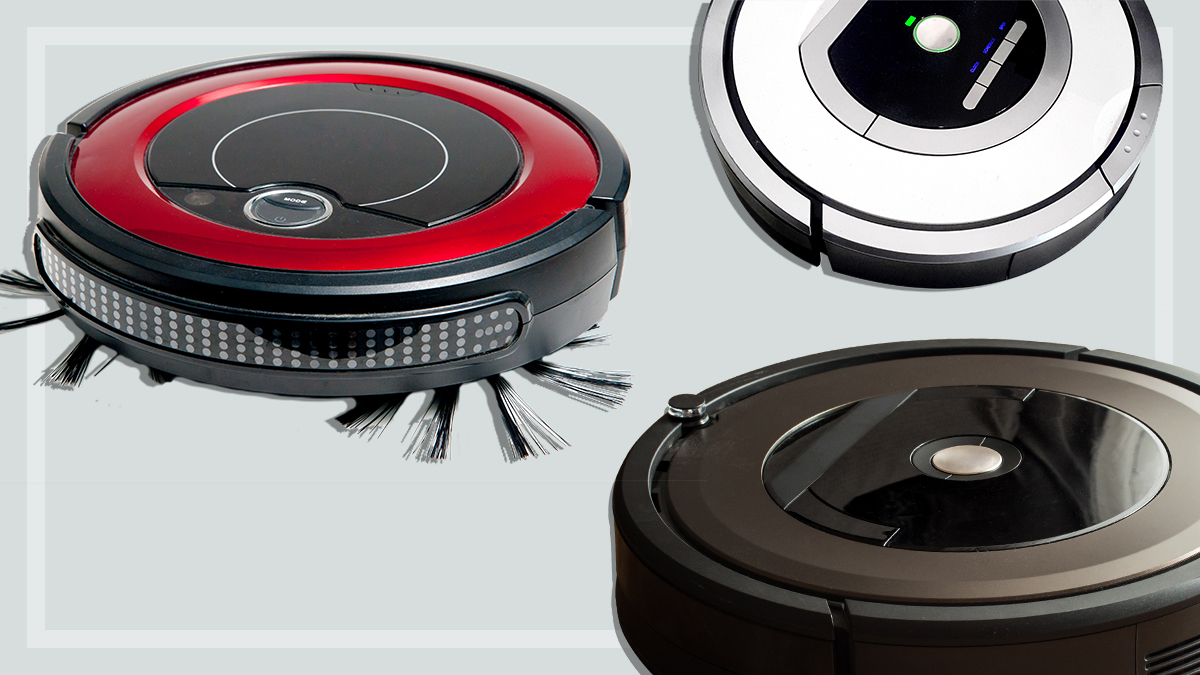Get our independent lab tests, expert reviews and honest advice.
Ecovacs Winbot W1 Pro review
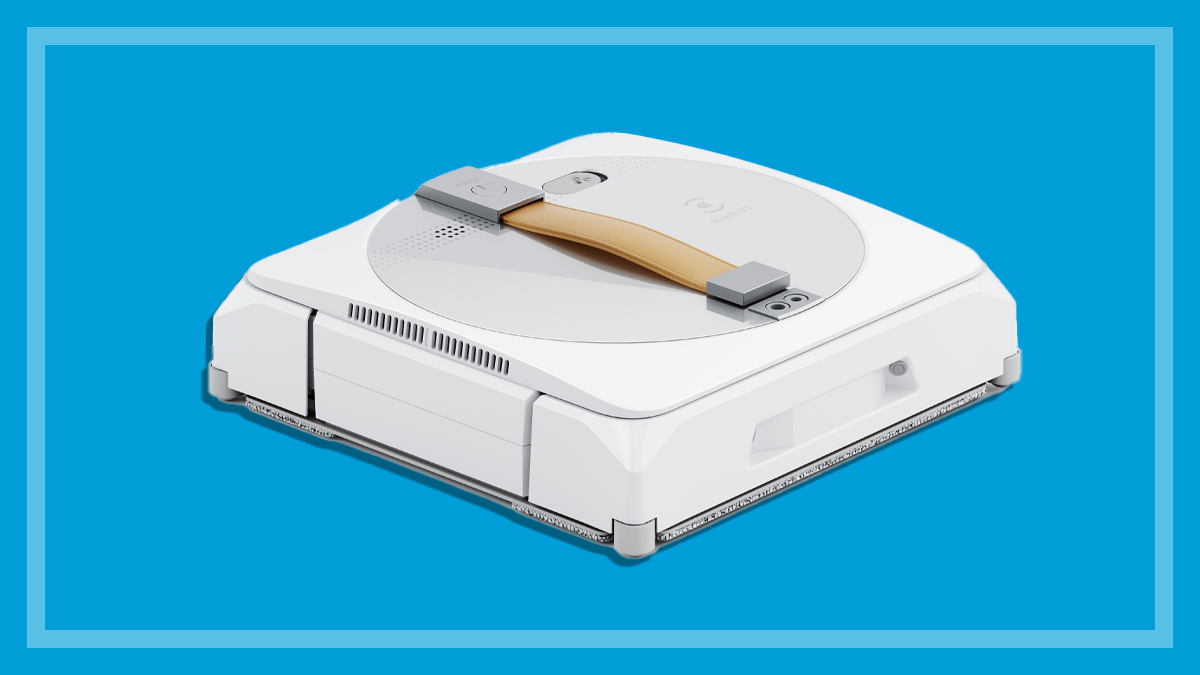
CHOICE verdict
Throughout our testing we found the Ecovacs Winbot W1 Pro worked well, cleaning our grimy windows both inside and out, with only small, faint patches of dirt remaining after a deep clean. But while handy for some scenarios, it’s not suitable for all window styles and sizes. The recommended cleaning fluid isn’t cheap, which adds to the running costs, but we did find that plain water can do a decent job if your windows aren’t too dirty.
Price: $799 (includes two mop pads and 230mL of cleaning fluid). A pack of two extra mop pads costs $29.90, and 230mL of cleaning fluid costs $14.90.
Contact:
www.ecovacs.com/auOn this page:
- What is the Winbot W1 Pro?
- Set-up and preparation
- Selecting a window
- Using the Winbot on frameless glass
- The cleaning process
- Using the app
- Is the Winbot W1 Pro worth it?
A robot that cleans your windows for you? Sounds intriguing. We had some hard-to-reach, cobwebby windows that needed a wash, so we bought the Ecovacs Winbot W1 Pro to see how well it worked, and whether our expert lab tester, James Thomson, could get some squeaky clean windows without the elbow grease.
What is the Winbot W1 Pro?
The Winbot is a device designed to snake across your windows, cleaning as it goes. It’s a small, square unit measuring 8cm tall and around 27cm on each side. On its base are driving treads that help it move along windows, a removable mop pad to wipe off the dirt, and a reservoir for the cleaning solution. Unlike cordless floor-cleaning robots, it’s mains powered. But it does have a back-up safety battery in case of power failure.
In the box you also get 230mL of window cleaning solution in a squeeze bottle, two mopping pads, a measuring cup, instructions (including a quick-start guide) and a handy zip-up carry case.
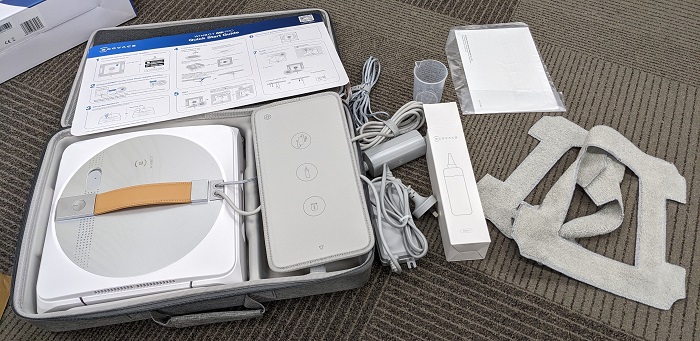
Set-up and preparation
To get started with the Winbot, you need to charge the back-up safety battery, which takes two hours. Voice prompts tell you what needs to happen next – for example, you might need to fill the reservoir with the cleaning solution if it’s empty (it has a 60mL capacity).
Apart from some initial spillage using the measuring cup, the set-up process was generally very good. You’re then prompted to wet the mopping pad, wring it out then attach it to the base. This, in conjunction with the Winbot’s fan action, helps it suction onto the window while in use.
To make sure the Winbot doesn’t cause injury by falling from a height in case of malfunction, you attach the carabiner on the 3.4m rubber safety tether to something secure, like a heavy table leg. This is particularly important when cleaning outside.
Selecting a window
After setting up, you must choose a suitable window for the Winbot to start cleaning, and it’s important to note that not everyone’s home will have windows that are appropriate. The Winbot can only be used on windows at least 3mm thick and framed windows must be bordered by an edge that is at least 5mm high.
In our test, we found a very dirty rectangular window measuring 1.3m x 1.1m encrusted with mud, dust and cobwebs. We also chose a larger glass partition measuring 2.8m x 1.3m.
Using the Winbot on frameless glass

Although the instructions don’t specify outright that the product is suitable for frameless windows (such as a shower screen or a glass pool fence panel), there are references to frameless windows throughout. Ecovacs confirmed to CHOICE that the Winbot does have edge detection, and can be used on these surfaces.
The instructions say not to use it on pieces of frameless glass that have a gap between them to prevent the unit from falling “due to poor attachment”. Ecovacs told us that the Winbot should be able to travel across gaps less than 3mm without issue.
“If the gap is larger, then the Winbot should detect it and not move over it,” Ecovacs advises.
For people with a glass pool fence, the Winbot may only be able to clean one panel at a time as the gaps between them may be too wide, restricting the usefulness of the ‘set and forget’ element of robot cleaners. Also, when cleaning outside, you must be able to access the external window in order to attach the Winbot to the glass. So, for example, you could open a sliding window and reach around to put the Winbot onto it.
Other restrictions to be aware of include not using the Winbot outside during gale force winds or rainy weather, and making sure the surface is flat and not greasy.
The cleaning process
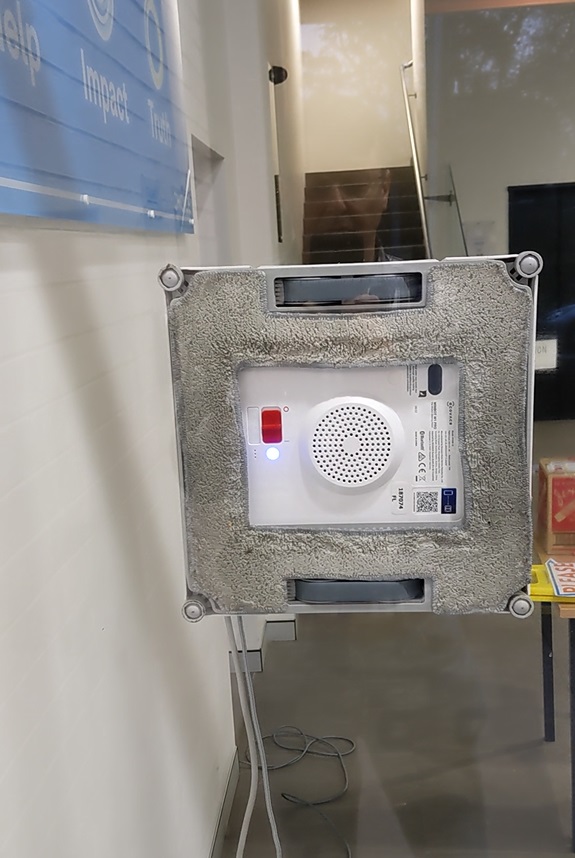
To start cleaning, you simply turn the power switch on and attach it to the window. You can press it firmly onto the glass (if using it on frameless glass it has to be 10cm away from the edge) until you hear a voice prompt, or press the start/pause button.
In our test, the Winbot found its way to the top of the window, then zig-zagged across, spraying the cleaning solution across the glass as it went. It then gradually made its way downwards until the whole window was done.
In ‘fast’ mode this process was done once, and in ‘deep clean’ mode it went over the area twice. When looking at it from the other side of the window, we could see how dirty the mopping pad was becoming.
The robot cleaned all the accessible areas of each window, and did a good job both inside and out, apart from a few small spots of dried mud. The window had not been cleaned for years and had some thick patches of dirt to start with.
At 73dBA it’s quite noisy, around the same volume as a stick vacuum cleaner.
After cleaning, you need to give the reusable mopping pad a rinse and leave it to dry, which is not difficult. Other ongoing maintenance tasks include wiping the spherical sensors and side rollers on each corner, and the driving treads.
The cost of cleaning
While the cleaning solution is supposed to last for an hour in the tank, ours ran out after around half an hour of use. The supplied cleaning solution isn’t cheap at $14.90 for a 230mL bottle from the official store. While individual results may vary depending on the cleaning mode, our projection is that the cleaning fluid works out at around $8.50 per hour for cleaning around 18m² worth of window in fast mode.
If your windows aren’t that dirty you should be able to get away with using plain water and the mopping pad occasionally
So can you use other, cheaper solutions to save money? Ecovacs says their advice is to either use their own solution or water, adding that they can’t control the corrosiveness, ingredients or quality of alternative cleaners. If corrosion has occurred from using other brands, this may void the warranty.
We tested the Winbot with plain water on a similarly soiled window, and after a deep clean only a few small, faint patches of barely noticeable dirt remained. This suggests that if your windows aren’t that dirty you should be able to get away with using plain water and the mopping pad occasionally (the instructions say water should be used “temporarily”).
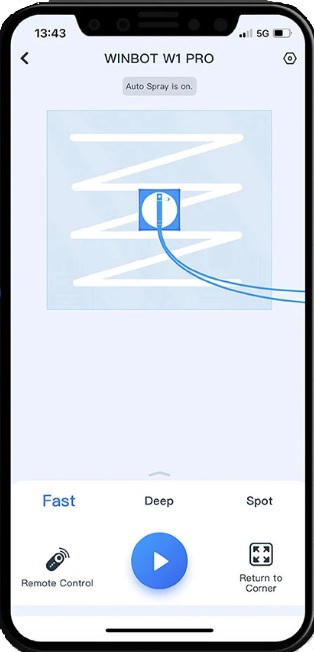
Using the app
Like many smart home devices, the Winbot has an associated app that requires you to create an account and agree to the privacy policy and user agreement.
The app lets you switch between fast, deep and spot clean, pause cleaning, or you can control the Winbot’s direction so you can move it to a more appropriate area for removal.
Is the Winbot W1 Pro worth it?
Having your very own window-cleaning robot is more than a novelty, as it’s a machine that actually works well. But it’s not cheap, has significant ongoing costs, and you have to have the windows to suit it.
Whether or not it’s worth it will depend on how much you’re willing to spend for sparkling clean windows without the usual hard work involved.
This review was first published in July 2023.

